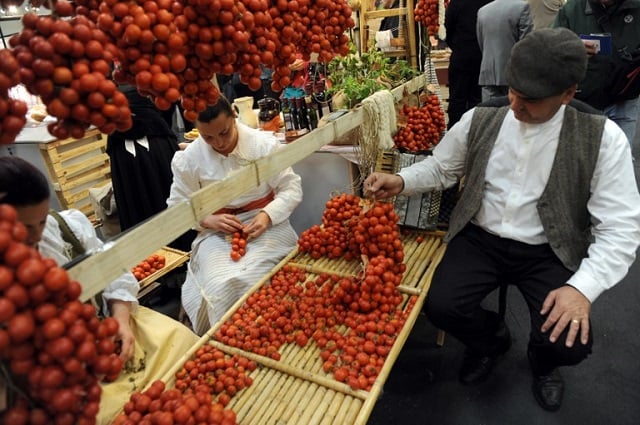The row kicked off when Naples requested an IGP (Protected Geographic Indication) denomination for Neapolitan peeled tomatoes.
After Naples, the capital of the Campania region, submitted its request to Italy's Agricultural Ministry, which decides which regional foods are deserving of special status, the neighbouring region of Puglia objected.
“Puglia is vital to the southern tomato industry, and it's our duty to protect our producers,” wrote Puglian councillor for agriculture Leonardo di Gioia on his Facebook page, explaining why the region would not endorse the label.
Di Gioia said the decision was “not merely parochial, but based on merit”, adding that the majority of southern Italy's tomato production took place in Puglia while Campania's tomato industry was more processing-based.
The latest Istat data, from August last year, shows that 174,240 kilograms of tomatoes were produced in Puglia, compared to only 23,887 kilograms in Campania. The vast majority of southern Italy's tomatoes are harvested in the Puglian province of Foggia.
- Serving frozen food without telling customers is fraud, rules top Italian court
- The words and phrases you need to know to decipher Italian restaurant menus
- This map shows where to find the very best pizza in Italy
In December, the two regions were engaged in a similar debate, this time over the status of mozzarella.
Italy's farming ministry granted the special DOP (protected designation of origin) label to the Puglian cheese, prompting anger in Campania, which has been home to the country's only DOP mozzarella since 1996.
While the disputes might seem trivial to the casual observer, in Italy the IGP and DOP labels act as a clear confirmation of quality, and any products holding them must be made using specially designated ingredients and techniques. The key difference between the two is that for DOP-marked food and drinks, each step of production must be carried out in the specified region, which is not a requirement for IGP status.
Campania is home to 25 DOP and IGP food products, compared to 21 in Puglia, though the latter has more wines of designated origin: 38 compared to Campania's 29.
Online sales of falsely labelled products are estimated to cost the Italian food industry millions of euros each year.
In the case of the mozzarella, the Campanian variety is made using buffalo milk, which is three times more expensive than the cow milk used to make Puglia's version. They feared that the introduction of another, cheaper DOP mozzarella would damage the reputation and sales of buffalo mozzarello.
Further north meanwhile, a ruling last summer that tiramisu originated in Friuli and not Veneto opened an old wound in the two northern regions, both of which lay claim to the creamy coffee dessert.
READ ALSO: Italian buffaloes treated to jazz and massage to ensure tastiest mozzarella




 Please whitelist us to continue reading.
Please whitelist us to continue reading.